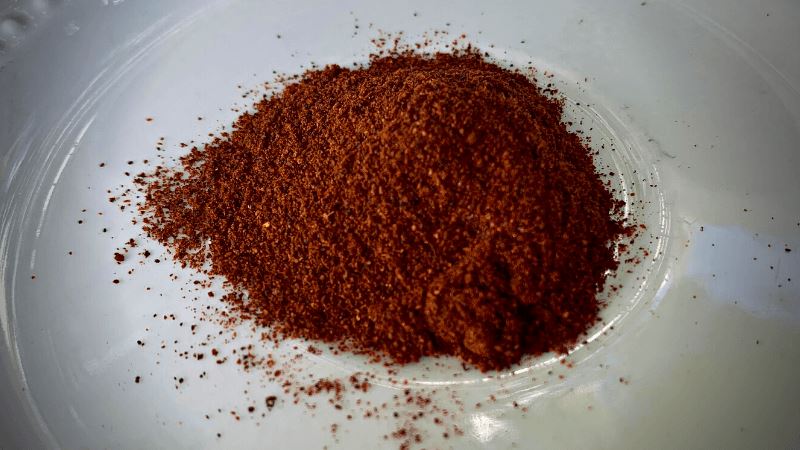Are All Chili Powders The Same
Chili powder—most recipes call for a generalized version of it. Does that seem odd to you? Considering there are 5 different species and over 4000 varieties of chile peppers throughout the world, it probably should.
So why is it that most folks believe there is a single uniform chili powder? Well, it’s like taco seasoning, poultry seasoning, or Chinese 5 spice. Chili powder was traditionally used to season chili con carne, but its uses have expanded far beyond that.
Despite a common belief that chili powder is simply dried, ground chiles, it most typically contains a blend of different types of chile peppers and other spices, such as garlic, cumin, oregano, and more. No two chili powder recipes are the same.
Now, get ready to have your mind blown, not only are there different blends for chili powders, there is also a major difference between chili powder and chile powder—whereas the latter actually is simply dried, ground chiles.
What is The Difference Between Chili Powder and Chile Powder
Technically, there are as many (or more) types of chile powders as there are chile peppers because chile powder, in its simplest form, is dried chiles, which have been ground down into a fine powder. The variations can expand further by sun-drying, smoking, charring, and blending. So to answer the question as to whether or not all chile powders are the same: no, they absolutely are not all the same.
Let’s take a look at some of the most common chile powders and what sets them apart.
What is The Difference Between Different Types Of Chile Powders
As previously mentioned, there are several thousands of types of chiles and, as such, the options for chile powder varieties are endless. Some of the more common chile powders are chipotle powder, habanero powder, ancho chile powder, ground cayenne pepper, paprika, and chile de arbol powder, but the list goes on-and-on (be wary of the ghost pepper powder, unless you want to feel the steam rising from your face).
Chipotle Chile Powder
Chipotle peppers are not a specific pepper plant, instead they are the name for a ripe jalapeño, which has been smoked, charred, and dried. To turn these smoked, dried jalapeño peppers into chipotle powder, the dried chiles are simply ground to create a fantastic smokey chile powder for use of anything from meat rubs to rimming margarita glasses. They add a great smokey, peppery flavor, without packing too much heat.
Habanero Chile Powder
As the name suggests, habanero chile powder is derived of the habanero chile in its dried form. Habaneros are small orange, heart-shaped chiles with a serious kick, while contributing notes of citrus. Habanero chile powder is fantastically flavorful but also known for packing the heat, so if you tend to choose “mild” or “medium” over “hot”, you might want to steer clear from this one.
Paprika
Paprika is a common ingredient in many dishes. It is not made from a specific chile pepper, but rather a variety of red peppers—more typically sweet and mild than spicy, though certain regions have been known to produce paprika varieties with quite a kick. Paprika is very versatile, found in sausages, marinades, potato dishes, stews, and yes, deviled eggs.
Ground Cayenne Pepper
Cayenne is another moderately spicy chile pepper. As with all of our previous mentioned chile powders, it is made by first drying and then grinding the pepper—in this case, from the cayenne pepper plant, which produces loads of small, slender peppers that turn bright red as they ripen. Despite their size, they contain plenty of capsicum, meaning the heat can creep up on you fast, so it’s best to start a little at a time.
*****







Slofoodgroup
Author